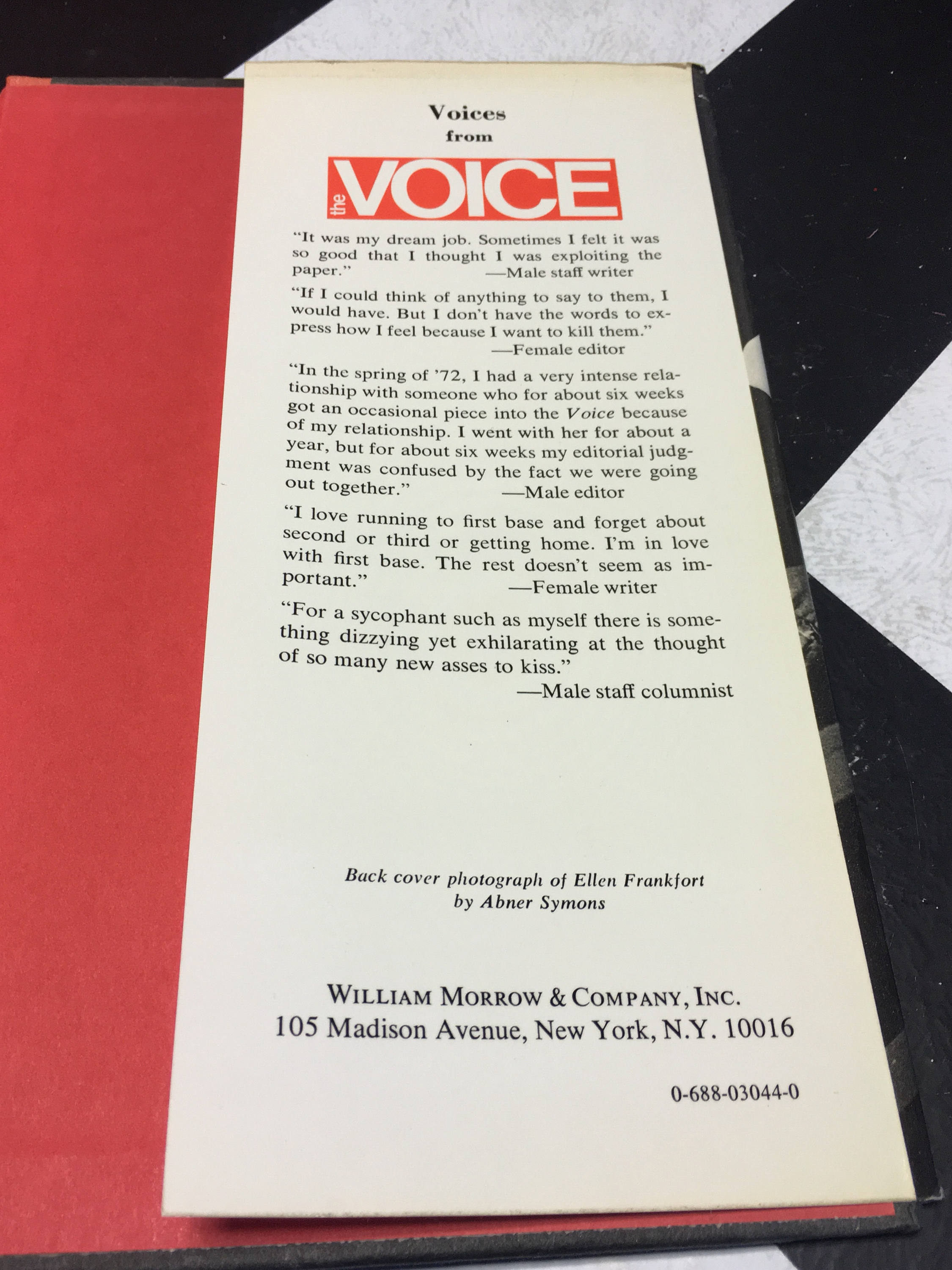
VILLAGE RETURNS ITS VILLAGE VOICEY FULL
You can check out a full transcript of the Edwin Fancher interview, as well as a short clip of Fancher talking about the launch of the paper on the GVSHP website. Currently, the Voice is owned by the Voice Media Group.

Carden Burden bought the paper in 1970 and it merged with New York Magazine in 1974. The paper has been sold a number of times since its founding. Join Village Voices where Janis Siegel of The Manhattan Transfer and Lauren Kinhan of New York Voices will equip and empower your voice to respond to the. GRATZ: The Voice was notorious for not paying.įANCHER: Well, we didn’t have any money! We would pay our payroll on Friday and the bookkeeper would say, “This is a good week, we can postdate the checks for Monday” or “This is a bad week it will be postdated Tuesday or Wednesday.” I mean this happened quite often. The first issue of the Village Voice, from October, 1955. In this clip, Fancher recounts the Voice’s continual lack of funds.

Edwin Fancher, in an oral history conducted by the Greenwich Village Society for Historic Preservation by interviewer Roberta Brandes Gratz, explores the early days of the paper. They had early financial backing from Norman Mailer and knew many writers, who became columnists or wrote one-off essays for the alternative paper. The Village Voice announced it would be ending its era of print here, 11 former music editors and writers remember their time within its prickly, hallowed halls. The two lamented the lack of reporting on the culture of the Village. The Village Voice was the brainchild of New School alumni Dan Wolf and Edwin Fancher. Its office is now located downtown in the financial district. The Voice, which began in 1955 in a tiny space in Sheridan Square, had been located in Cooper Square since 1991. Your copies of the Village Voice back to January 2021 for you to browse or download. Last week’s announcement in The Villager confirming The Village Voice’s move from its offices in Cooper Square got us thinking about the history of the storied Village newspaper. “The Voice may be bigger than print and ink or any owner, editor, medium, or era, but this paper belonged to New York, and the people who have worked for it have served both the Voice and the city in exemplary fashion.The Village Voice made its home in Cooper Square from 1991 to 2013. Editor Stephen Mooallem said the roughly 500,000 pages of Voice archives would remain for the time-being “a state-of-the-art analog experience. What happens next for the Village Voice could represent a bellwether for the rest of the publishing industry looking toward an all-digital future. “So enough with the eulogies for Rolling Stone and the Village Voice, two relics demolished not by the internet but their own narcissistic, congenital nostalgia,” Callahan crowed. While many mourn the Voice’s physical passing, others have been less charitable.Ĭontrarian New York Post columnist Maureen Callahan wrote that the changes at the Voice and the sale of Rolling Stone meant post-war baby boomers were finally releasing their “chokehold on American culture”. The images include the infamous denizens of the downtown realm – William Burroughs (with sword), the Beastie Boys, Madonna, Jack Kerouac – while cartoonist Steve Brodner reminisced: “This is journalism – authentic, fearless, two-fisted, pure.” In the final edition, a photo section celebrated the photographers and writers who “looked out at the rest of the world from south of 14th Street”.

In severing the Voice from its physical existence, owner and publisher Peter Barbey said the 62-year old print publication had been “a public forum for ideas and a cultural touchstone for the progressive thought and envelope-pushing aesthetics that defined New York”. Michael Musto, the longtime nightlife columnist, marked the occasion with a return of his “La Dulce Musto” column.īy mid-morning on Thursday, many of the publication’s distinctive red distribution boxes were empty, copies collected up by souvenir hunters. The 176-page issue features a 50-page portfolio of journalistic luminaries who helped define the publication, including Voice co-founder Ed Fancher, theater critic Michael Feingold and film critics J Hoberman and Amy Taubin. Photographed in a salute, the image of Dylan was taken in January 1965, near the old offices of the Voice.


 0 kommentar(er)
0 kommentar(er)
